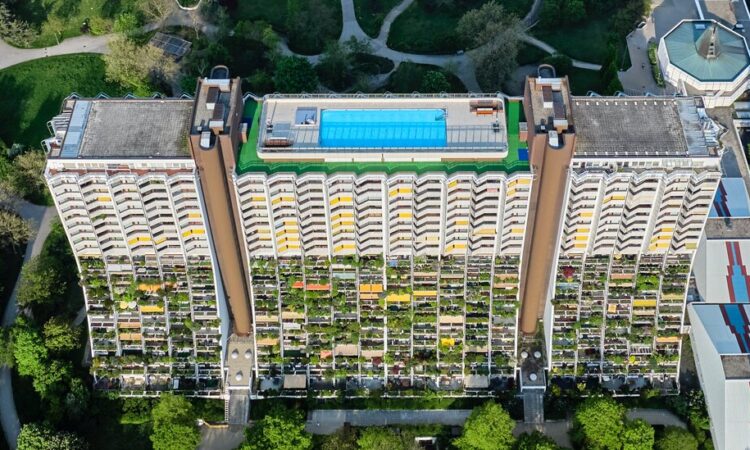
One afternoon last fall, I walked through central Vienna, past ornate buildings with lacy balconies, balustrades and porticos — private apartments from the 19th century. They were interspersed with social-housing blocks from the 1920s and 1930s — the Gemeindebauten, which stood out not only for their modernist architecture but also for the triumphant red block lettering on their facades, announcing: Erbaut von der Gemeinde Wien in den Jahren 1925-1926 aus den Mitteln der Wohnbausteuer. (“Built by the municipality of Vienna in the years 1925-1926 from funds from the housing tax.”) A stroke of political genius, I thought, as I waited for the tram: explanation and advertising. Half an hour later, I was in the 21st District, the “Russian territory” where Eva Schachinger used to live. Wohnpartner, the city agency that tries to foster community within the Gemeindebauten and helps resolve tenant conflicts, was having an open house at her old building, a flat, minimalist complex with orange elevator shafts.
Following Wohnpartner signs, I found the glass-walled community center and entered. Most of the attendees were mothers with small children or retired people. There was a painting station, table tennis and a plant exchange. People had brought their secondhand goods to give away, and a millennial Wohnpartner staff member offered tech help, which, surprisingly, no one seemed to need. Among the permanent fixtures was a library filled with free books and a play area with an array of wooden toys.
I took a seat with Eva in the communal kitchen, where someone had made a large pot of butternut-squash soup. (Some of Red Vienna’s planners had hoped to centralize cooking in communal facilities with industrial-strength machines, but the fascists came first, and then, under capitalism, Austrian families quickly became accustomed to shelling out for their own KitchenAids, Vitamixes and Nespresso machines.) Since retiring, Eva has been collaborating with Malyuun Badeed, the building’s caretaker, on a twice-yearly magazine for the complex that includes a recipe and a crossword, along with the latest community news. Badeed, who joined us in the kitchen, wore a black hijab with pearls and waved her hands as she spoke of leaving Somalia as a single mother in the 1990s. When she first arrived in Vienna, she hawked newspapers on the street; now she helped produce one.
Eva told me she often came back to the Gemeindebau to tutor students from the complex with a woman named Edith, an elderly neighbor who lived in a nearby Gemeindebau. Edith’s next-door neighbors help buy and deliver her groceries, which she has difficulty carrying. In exchange, she watches over their three children. When Eva called to wish her a merry Christmas, Edith was busy wrapping 40 presents for the three kids; she hid them around her apartment so they wouldn’t be found before Santa came to visit. “The Gemeindebau is where socialization happens,” Eva was fond of telling me, and this is what socialization looks like across the generations.
I learned that the average waiting time to get a Gemeindebau is about two years (at any given moment there are 12,000 or so people on the waiting list, and each year about 10,000 or more people are housed). Vienna residents — anyone who has had a fixed address for two years, whether they are a citizen or not — may apply, and applications are evaluated based on need. Florian Kogler, a 21-year-old university student, was considered an urgent case because he lived in an overcrowded two-bedroom apartment with his mother, stepfather and two siblings. He shared a room with his brother, while his parents slept in the living room. He also got priority because he was moving into his own apartment for the first time. Kogler was offered an apartment in about a month. “That’s unusually fast,” he told me.






